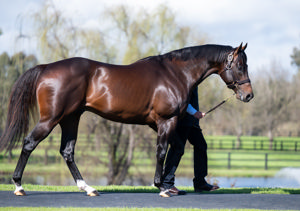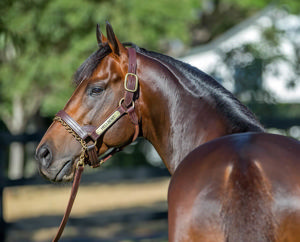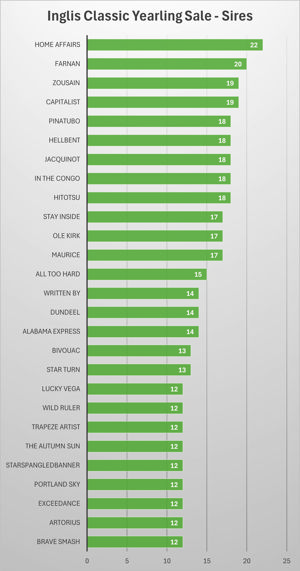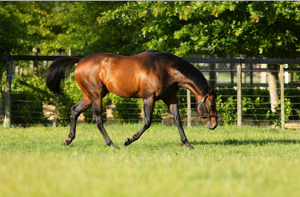How wealthy would I be if I received a dollar for every query I have had on these issues!
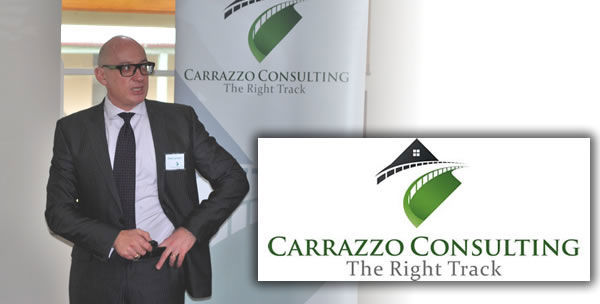
Buying a stallion (whole or in part via a syndication) or worthwhile commercial broodmare is no cheap exercise and cash-flow needs to be very solid to afford these spends when payment time comes. Enter the “cashed-up” Self-Managed Super Fund (SMSF) solution!
This article will focus on some basic ground rules that need to be met to justify that these acquisitions can be “eligible investments” for your SMSF.
1.Superannuation Investments and the “Sole Purpose Test”
The trustee of a regulated superannuation fund must ensure that the ''sole purpose test'' as prescribed in the Superannuation Industry Supervision Act (“SIS”) Act is satisfied at all times. The sole purpose test requires a fund to be maintained solely for one or more of the ''core purposes'', or for one or more of the core purposes and for ''ancillary purposes''. A fund which is not maintained solely for at least one of the core purposes fails the test, as does a fund which has as one of its purposes a purpose other than a core or ancillary purpose.
“Core” and “Ancillary” purposes are defined as:
Core purposes
- Retirement benefits
- Specified age benefits
- Pre-retirement death benefits
Ancillary purposes
- Resignation/retrenchment benefits
- Disability benefits
- Post-retirement benefits
- Financial hardship benefits
- Welfare benefits
- Long service leave benefits
- Compassionate benefits
The sole purpose test is a civil penalty provision, and trustees may be liable to civil and criminal proceedings if the provision is breached.
1.1 Current SIS Investment Standards
Superannuation funds should ensure that they carefully evaluate their compliance with the SIS investment standards.
As a general rule, a fund must:
- have an investment strategy;
- enter transactions on an arm’s length basis;
- not borrow unless it is a Limited Recourse Borrowing of a “single acquirable asset”;
- not acquire assets from members or relatives of members;
- not provide financial assistance to members or their relatives; and
- not invest in “in-house” assets above the relevant thresholds (currently 5% of the market value of fund assets).
2.Exotic investments & new tighter standards
The Government announced that from 1 July 2011 new standards apply to “collectables” or “personal use assets” that are acquired by a Self-Managed Superannuation Fund (SMSF).
Collectables includes items such as:
- Artwork;
- Jewellery;
- Antiques;
- coins or medallions;
- wine;
- cars;
- memorabilia;
- postage stamps or first day covers;
- rare folios, manuscripts or books;
- cars;
- recreational boats;
- memberships of sporting or social clubs, or
- assets of a particular kind, if assets of that kind are ordinarily used or kept mainly for “personal use or enjoyment”.
Unfortunately, the latter category generally includes racehorses in training, owned by a SMSF, given that the ATO has long classified them as “personal use assets”. A personal use asset is defined as an asset “kept mainly for the taxpayer’s personal use or enjoyment”.
2.1 What are the new standards for holding these assets?
The tightened rules state that:
- The item must not be leased to, or part of a lease arrangement with a related party (a related party includes a member of the fund);
- If the item is transferred to a related party, it must be independently valued;
- The item must not be stored in the private residence of a related party;
- The item must not be used by a related party;
- The decision on the storage of the item must be recorded and kept for at least 10 years after the decision has been made; and
- The item must be insured in the fund’s name.
It’s obvious from the above, that the very fact that an item such as a Racehorse in training must not be “used” or “leased” to a related party now makes them ineligible to be a SMSF asset and should be immediately removed to either a related party or outsider for an arm’s length value.
Against this background, I comment below as the technical feasibility of having the stallions and mares held in a SMSF.
- Stallion Shares
To respond to these questions, background on the “sole purpose test” is required.
No matter what type of investment a fund makes, whether it is an exotic investment or an investment in equities, the fund needs to carefully evaluate the investment prior to deciding to make, keep or sell the investment. Significantly, the expertise of the trustees of a fund may also have a bearing on the types of investments of the fund – if a trustee has considerable expertise in a particular area (e.g. horse breeder), it may well be that the investment portfolio of the fund will reflect that expertise.
The key questions that trustees need to ask themselves when they are making investment decisions, particularly is a SMSF are:
- Does the investment satisfy the sole purpose test?
- Is the investment consistent with the investment strategy of the fund?
- Does the investment breach any of the SIS investment standards (see above)?
When considering the appropriateness of the investment in terms of the sole purpose test, the fund needs to consider such things as:
- What is the expected income flow from the investment?
- Is there any capital appreciation likely to arise from the investment?
- If there is only an expected capital appreciation, does the amount of this appreciation justify the lack of income flow?
Having regard to the above investment guidelines, I would consider it unlikely that a SMSF investment in a stallion share would cause it to fail the SIS “sole purpose test”, reasons where:
- The SMSF trustee has significant experience and expertise in the horse racing and breeding industry;
- An interest in a commercial stallion should be capable of generating a yearly cash-flow consistent with your fund’s investment strategy. Their expected yearly nomination fees should be able to generate a significant return on the funds invested;
- Unlike many public companies, a shareholder “overs” dividend can be reasonably expected on a year to year basis;
- You can secure the SMSF’s interest in the asset via insurance;
- Stallion Shares commonly generate capital appreciation. Even in years where dividends are low or non-existent, the amount of capital appreciation could easily justify the lack of income; and
- Most fund investment strategy’s require liquidity from its assets – stallion shares have a fertile secondary market and many avenues exist to enable a relatively quick disposal, e.g. bloodstock agents, auction, industry advertising etc.
Service right – cannot be used by a related party
Read this section below carefully, the use of a stallion right by your commercial breeding entity is not as straightforward as you might think!
From 1 July 2000 “in-house assets” may not amount to more than five percent of the total market value of a fund’s assets.
Under the SISA rules, the definition of an “in-house asset” includes:
“an asset of the fund subject to a lease or lease arrangement between the trustee of the fund and a related party”
A “lease arrangement” is defined in the SISA rules, being:
“any agreement, arrangement or understanding in the nature of a lease (other than a lease) between the trustee of a SMSF and another person, under which the right to use, or control the use of, property owned by the fund”.
In effect, this closes off the right for a related party (i.e. your breeding entity) to use a stallion right where the horse market value is greater than 5% of the total market value of the fund’s assets. Where this is the case, a related party, such as a breeding business in a related entity, could not use the service right, even where you pay the required “arm’s length” market value fee to the super fund.
Where 5% test is met
Where, however, the stallion value is less than 5% of the total market value of the fund’s assets, to secure the “arm’s length” nature of this investment, the related party must pay the fund a commercial fee where you use the service right for your own breeding activities. The “arm’s length rule” rule also applies to external parties that pay the SMSF to use the right. If the fund were of a complying nature, the fee would generate 15% tax within the fund (unless the fund is in pension phase where NIL tax applies).
Investment strategy
Finally, any investment that your fund undertakes must be consistent with its investment strategy. For example, asset allocation percentages should be in line with the investment strategy currently formulated. If a stallion share is contemplated, I suggest that you adjust these percentages accordingly – fund trustees are encouraged to review investment strategies on a regular basis as and when needed.
- Broodmares
In my professional opinion, it could be reasonably argued that a broodmare can be held in a SMSF where she avoids the “personal use asset”/“collectable” designation outlined in the above stricter investment standards. This typically will be achieved where:
- The mare acquired is commercial, reflected primarily in original purchase price;
- The mare is used for commercial breeding purposes and all foals are ultimately sold on arm’s length basis. The primary purpose to sell foals is crucial;
- The mare and her foals are appropriately insured;
- The numbers acquired are not to the extent and scale of an income tax “business” (preferably two or less held for this purpose at any one time);
- It is not held as trading stock within the SMSF accounts;
- She is included in the investment strategy; and
- The SMSF trustee has capability and experience in the breeding industry.
- Private Ruling for definitive ATO opinion
If you or YOUR client base need a definitive ATO opinion on this issue, I would suggest you seek a private ruling prior to commencement of the activity.
A private ruling is an expression of the Commissioner’s opinion of the way in which a relevant provision applies, or would apply, to an entity in relation to a specified scheme. Private rulings are usually made on application by an entity, the entity’s agent or legal personal representative.
The ATO should issue the private ruling within 60 days. Where this does not happen, the applicant may request the Commissioner to issue the private ruling. If a further 30 days passes, the applicant has objection rights.
Please do not hesitate to contact the writer if you wish for me to clarify or expand on any of the matters raised in this article.
PAUL CARRAZZO CA
CARRAZZO CONSULTING PTY LTD
801 Glenferrie Road, Hawthorn, VIC, 3122
TEL: (03) 9982 1000
FAX: (03) 9329 8355
MOB: 0417 549 347
E-mail: paul.carrazzo@carrazzo.com.au
Web: www.carrazzo.com.au

